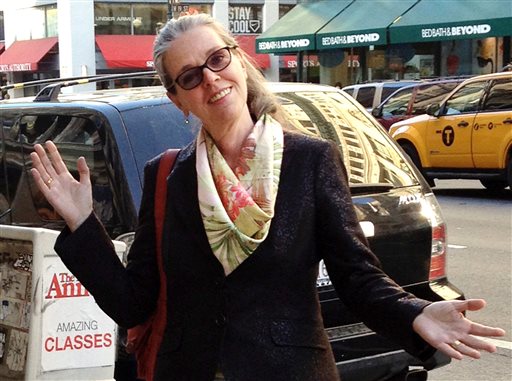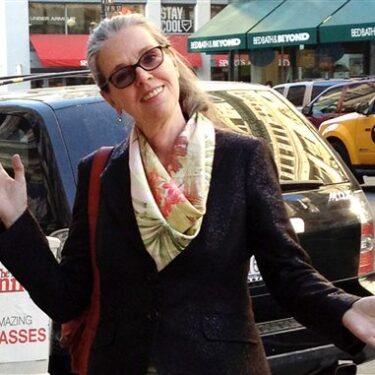NEW YORK (AP) -- Madge Stager, a former New York-based photo editor for The Associated Press who helped direct coverage of the biggest stories around the world over four decades, has died. She was 61.

Stager, who retired in 2009 after 37 years with the AP, died at New York University Hospital on Saturday of pneumonia and complications from the flu, said her husband, Chris Stager.
Stager was a familiar, straight-talking voice to journalists around the world, assisting them in chronicling such stories as the wars in Iraq and Afghanistan, numerous Olympics Games and the 2001 Sept. 11 terrorist attacks.
“Madge was a steady hand who, without drama, took on and mastered whatever we asked her to do,” said Lou Boccardi, former AP president and general manager. “She was an excellent photo editor whose skills and quick wit made her a well-known presence throughout the photo system. I know her death brings sadness in many AP places.”
Stager began her career with the AP in 1972 in the photo library, and four years later, she was named a photo editor. Stager served in that position — assigned to various desks including a long stint on the international photo desk — before she was promoted in 2000 to enterprise photo editor. She became chief of the headquarters photo desk in 2004 and served in that position until taking early retirement in 2009.
Colleagues remembered her as a direct, sometimes salty-tongued editor who had a unique ability to listen to an argument, give her opinion, and, in the end, generally get people to agree.
Hal Buell, former director of AP Photos, said Stager was one of the first women on the New York photo desk and her success helped pave the way for other women in what since World War II had been a male-dominated group.
“Madge was a formidable force on the New York photo desk, journalistically aggressive who over the years became an accomplished editor well known throughout AP’s worldwide photo service,” Buell said. “She was widely admired and well liked throughout the system. And she melded it all with a quick, Irish wit.”
A lifelong New Yorker, Stager graduated from the High School of Art & Design in 1972. She continued using her creative talents in retirement, editing, organizing and publishing several coffee table photo books, and painting and creating unique needlepoint artwork that was recently displayed in a Manhattan gallery, said her sister-in-law, Judy Glave.
“Madge Stager was a first-rate professional and touched the lives of many during her long tenure at the AP,” said Santiago Lyon, AP’s vice president and director of photography. “She both witnessed and influenced dramatic changes in news agency photography, from the days of negatives and prints right through the advent and spread of digital photography.”
In addition to her husband, she is survived by a brother, Tom Kelly, a former news editor for the AP’s New York City bureau, a sister, Kathleen Kelly Ryan, and numerous nephews and nieces.
A memorial service was planned for a later date. In lieu of flowers, her family requested donations be made in her memory to Doctors Without Borders.




